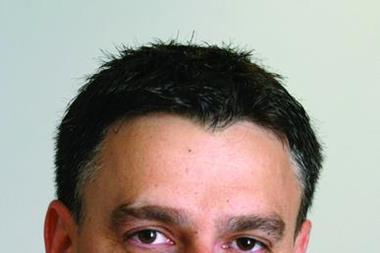Chatting to friends, posting pictures and writing on a mate’s wall may be thought of as harmless fun, but such carefree actions can be a boon to insurance investigators. It’s not only social networks that are useful, but everything we do on the web. Even leaving no data can be grounds for suspicion …
In less than a decade, social networks have gone from being unheard of to being so common that they are taken almost for granted.
For many people, it is now so normal to use sites like Facebook or Bebo to chat to friends and family that they put most details of their day-to-day life on them – and insurance fraud investigators are finding this candour incredibly useful.
Many industries can benefit from social media and the customer contact it brings, and insurance is no exception – but it can be more than just a useful marketing tool.
The use of data generated by and stored on the internet is only in its early stages, and companies are just starting to understand what they can do with this data. One of the consequences is that assuming a false identity is now much harder.
While retailers hope to sell more to people by building up a picture of what they usually buy, there is the potential for other industries to use it to disprove suspect identities.
Not only that, but the web can cause criminals and fraudsters to play right into the hands of those looking for them.
Join the dots
It is fairly common practice to upload photos of recent holidays or nights out on Facebook, or talk to friends by writing on their walls. People who happen to be involved in insurance fraud are no different, and it makes it much easier to unearth facts about their lives and their connections.
Insurance investigators have made social network searches part of their armoury against fraudsters. They look for details on suspect claims and use information they find to gain an understanding of the individuals involved.
“We don’t use it to prove fraud. All we would do is use it to help us paint a picture of what it is we’re looking at,” says Cunningham Lindsey’s complex technical services director Cath Williams.
“It helps us to concentrate in the right areas, rather than going on a scattergun approach,” she explains. “It helps us to become more focused. Social network sites can be very useful because of the amount of information they contain.”
The network aspect of social media comes into its own for motor insurance fraud. Fraudsters who, in a claim, say they don’t know each other often do not know that unlocked profiles can be seen by anybody. Williams says: “Convictions with a social media element are increasing, but that’s only part of it. We’ve had cases where we’ve been able to obtain information that proves parties do know each other – and have been able to repudiate the claims.
“We’ve had a handful of cases where we’ve found people posing together in photographs. In one particular case, they posed by the vehicle involved in an accident, pointing at the damage and giving a thumbs-up.”
Law firm Weightmans’ head of fraud Stuart Smith says one of his cases involved crash claims worth a total of £1m. Social networks were used to prove connections, either through individuals posting pictures of themselves together, writing on each other’s walls, or simply being on each other’s friends lists.
There are privacy issues to consider when using people’s personal information against them, but this simply means abiding by the rules. Williams says: “We don’t use information that’s not legitimate. We’re not trying to get people to add us as friends or contravene their privacy.
“It’s a specialised area – you need to know what you’re looking for and how to use this information. It’s a fine line you’re dealing with here, involving data protection and human rights legislation.
“You have to be careful: we wouldn’t advise using it in a widespread way, and you need to make sure you always apply best practice and analyse it properly.
“We don’t want to end up going to court, presenting evidence and then find we are being criticised for obtaining information that is irrelevant or illegal.”
Open season
Insurance Fraud Bureau (IFB) director Glen Marr agrees. He says the only information that should be used is ‘open source’, with details freely available to everyone.
But he adds a caveat: “If fraudsters are foolish enough to leave their details open, we will use them.”
However, awareness of internet privacy is growing, and social networks are often not the rich resource they were a couple of years ago. Scare stories of people losing their jobs because of ill-advised Facebook updates, or having their identity stolen have led to more social network users locking their accounts. They make sure only their friends can see the posts they write and the pictures they upload.
This trend might appear to be set to stop investigators’ successes, but this is not necessarily the case. Not everybody has cottoned on to the idea of keeping their online lives private, and there are always more sites to search and other sources of data to explore.
Not easy to disappear
“As time goes by the fraudsters will become wise and the investigators will need to move on and use different techniques,” Weightmans’ Smith says. “But the use of social networking sites is only part of a wider strategy. Fraudsters will always move as investigators move. It’s a constantly changing game and in five years it will be completely different.”
Smith says it won’t be easy for fraudsters to disappear on the web, even if they use another name. Using a bogus identity is often a major part of any fraud, but creating another persona will be harder as people increasingly live their lives online.
Everything from online shopping to renewing a library book generates data and builds a picture of an individual.
In addition, Data Protection Act permitting, the proliferation of data could make it harder for criminals to fool investigators.
Avertis Risk Solutions chairman Mark Smith says that, in many cases, the success of social networks as an intelligence tool is anecdotal. That, however, is set to change. He says: “US developers have recently launched a technology that can utilise Facebook and similar data in a systemic way.
“The key for any intelligence professional, and those who employ them, is to interpret all data in context and carry out extensive analysis before making assumptions.
“Simply because someone writes ‘I’m going to hack into MI6’ isn’t in itself proof that they actually will.”
Avertis’s Smith also points out that criminals and fraudsters could try to derail an investigation by publishing false information.
It may seem like a quagmire at the moment, but the trend is clear: information obtained via the web is a new frontier for investigators and fraudsters to fight over. Staying up to date with developments is crucial for those involved in tracking down insurance fraud.
Hunting for information
Weightmans head of fraud Stuart Smith says that being sure of identities will be crucial to the future of the insurance industry – and experts are becoming increasingly sophisticated in processing data. “It is important for the industry and investigators to see the extent to which footprints are left on the web. People who don’t exist don’t leave them – people who do exist, do.”
“Investigators are using data from wider sources. Social networks have been useful in establishing connections between people, but in future investigators are likely to look to new data. They just need to ensure that the process is ethical and there’s compliance with data protection.”
The web is huge – and growing – and fraudsters shouldn’t assume that they cannot be detected just because they’ve turned their Facebook settings to private. The Insurance Fraud Bureau (IFB) is looking into other ways of using the networks and hunting for information.
The IFB’s Glen Marr says: “We’re experimenting with a Facebook pop-up that advertises our services for reporting fraud. We’re tracking and monitoring what happens, whether people click on it and go to our website. If more people report it, it improves our detection rate.”
The organisation is also using blogs and forums to gather intelligence. “There are so many blogs out there. In the last couple of weeks we’ve been looking at a forum where people were uploading photographs of modified vehicles, with a registration openly on display. We’re currently liaising with an insurer on these.
“There’s a lot out there – it’s quite surprising how many people will openly display things and openly discuss insurance fraud. If somebody has had a conviction or been arrested, you’ll see them giving each other hints in forums.”
Much of the information is given anonymously, but it all helps to build a picture, and means that investigators can stay one step ahead. In particular through the use of technology which, while still emerging, has the potential to improve investigators’ effectiveness. IT






































No comments yet